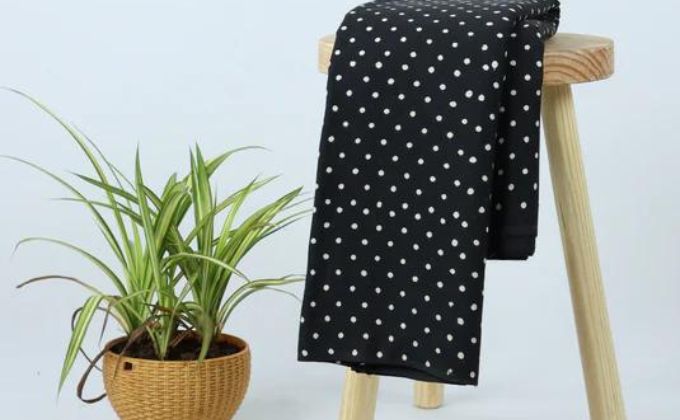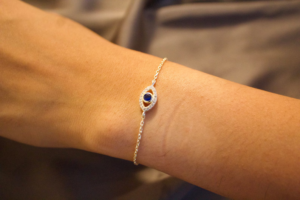
Block print fabric is a centuries-old textile art that brings a touch of tradition, elegance, and individuality to any wardrobe or home décor. This fabric, distinguished by its hand-carved designs and intricate patterns, remains popular for its unique charm and artisanal craftsmanship. If you’re new to block print fabric or looking to deepen your knowledge, this guide will help you understand how to choose the perfect block print fabric and how to care for it to maintain its beauty.
1. Understanding Block Print Fabric
Block printing is an ancient method of textile design where artisans use wooden blocks carved with intricate patterns to manually stamp fabric. This labor-intensive process creates unique patterns, with slight imperfections that add to the fabric’s charm. Typically, natural dyes are used, which give the fabric a soft, organic look.
Block print fabric is celebrated for its individuality, with each piece slightly different from the next due to the handmade nature of the printing process. It’s used in a variety of items, including clothing, tablecloths, curtains, and bedding, adding a rustic yet sophisticated aesthetic to any space.
2. How to Choose Block Print Fabric
Choosing the right block print fabric involves several factors, such as the type of fabric, the design, and the occasion for which it’s intended.
a) Fabric Type
Block printing can be done on various types of fabric, each offering a different feel, look, and durability.
- Cotton: The most popular fabric for block printing is cotton. It is comfy, breathable, and simple to maintain. Cotton block print fabric is ideal for summer clothing, home décor, and casual wear.
- Silk: Silk print fabric is luxurious and often used for more formal wear. Its smooth texture and subtle sheen elevate the block print design, making it perfect for sarees, scarves, or elegant home accents.
- Linen: Linen is a strong, durable fabric that works well for block printing. It’s often used for home textiles like tablecloths and curtains, providing a rustic, natural look.
b) Design and Pattern
Block print fabrics come in a variety of designs, from floral patterns to geometric shapes and traditional motifs. Think about the following while selecting a design:
- Occasion: Bright, bold patterns work well for casual wear or bohemian home décor, while more subtle, intricate designs are suitable for formal attire or classic interiors.
- Color: Natural dyes are commonly used in block printing, offering earthy and soft tones. Choose colors that complement your style or existing décor. Indigo, mustard, and maroon are popular shades that pair beautifully with block prints.
c) Purpose
Consider what you’ll be using the block print fabric for. Lighter fabrics are great for summer clothing, while heavier fabrics are better suited for upholstery or curtains. Additionally, think about how often the fabric will be used. If you’re purchasing print fabric for everyday items like bedsheets or tablecloths, opt for durable, easy-to-care-for materials.
3. Caring for Block Print Fabric
Block print fabric, especially when made with natural dyes, requires special care to maintain its vibrant colors and intricate patterns. Follow these tips to ensure your fabric stays in great condition:
a) Washing
- Hand Wash or Machine Wash on Gentle Cycle: It’s best to hand wash block printed fabric with cold water and mild detergent to prevent fading. If you must wash in the machine, use cold water and a moderate cycle.
- Separate Dark Colors: Block print fabrics can bleed, especially when washed for the first time. Be sure to wash dark and light fabrics separately to avoid color transfer.
- Avoid Harsh Detergents: Opt for mild detergents that are free of bleach or strong chemicals, as these can strip the natural dyes from the fabric.
b) Drying
- Air Dry: Avoid using a dryer for block printed fabric, as the heat can cause shrinkage and fade the colors. Instead, hang the fabric to air dry in the shade to preserve its vibrancy.
c) Ironing
- Low Heat: If your block printing fabric requires ironing, use a low heat setting, and iron on the reverse side to avoid damaging the print.
4. Storage
When storing block print fabrics, especially those made from natural fibers, keep them in a cool, dry place. Avoid direct sunlight, as prolonged exposure can cause fading. It’s also a good idea to wrap the fabric in a cotton sheet to prevent dust and dirt from accumulating.
Conclusion
Block print fabric is not only a beautiful and timeless textile choice but also a celebration of artisanal craftsmanship. By choosing the right fabric and taking proper care of it, you can ensure that your block print items remain vibrant and durable for years to come. Whether you’re adding block print fabric to your wardrobe or incorporating it into your home décor, the unique charm of this fabric will bring warmth, style, and a touch of tradition to your space.
At Dmaasa, we offer a range of high-quality block print fabrics that are perfect for every need. Explore our collection today and experience the artistry of block printing!






